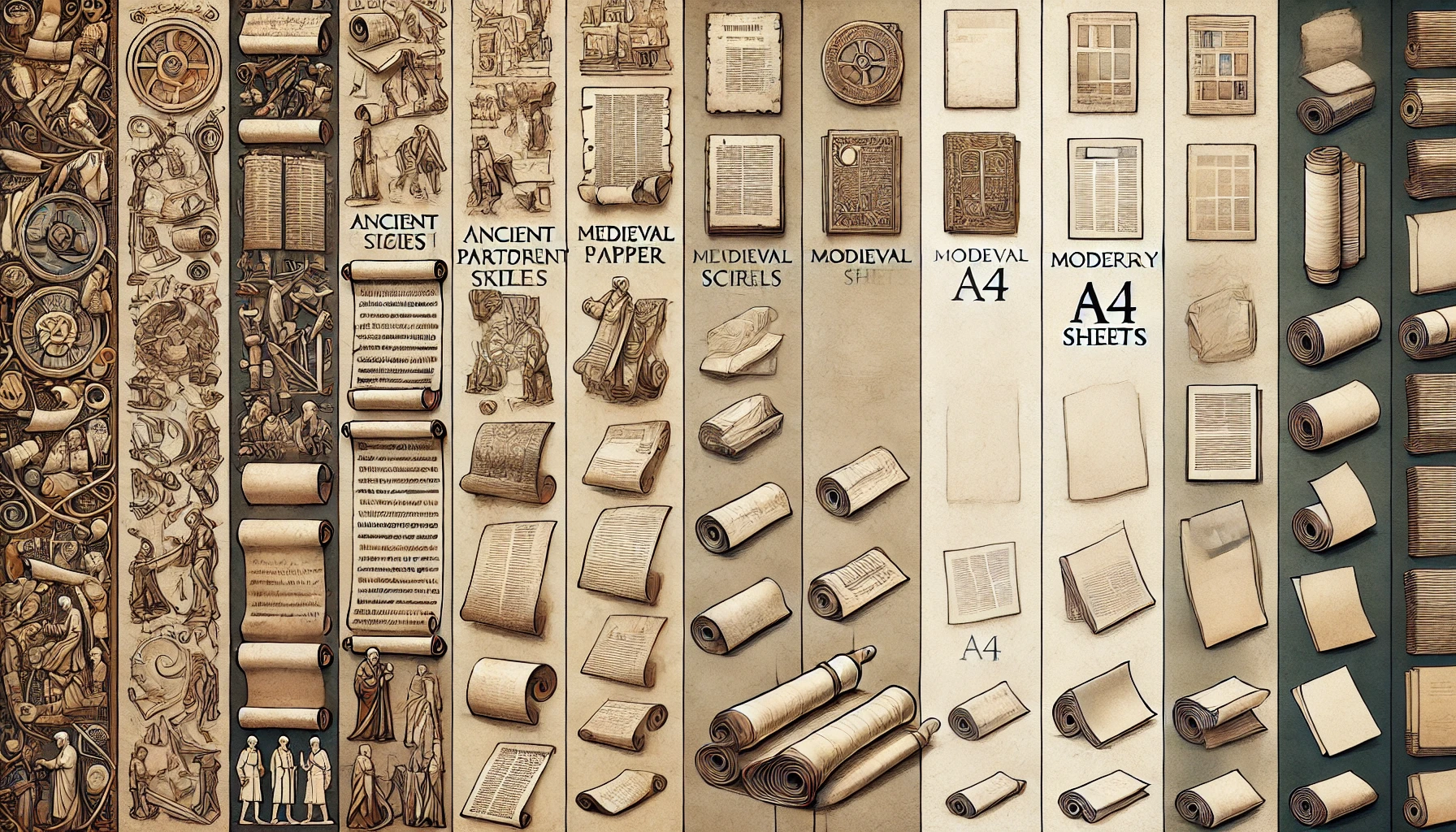The history of paper sizes is a fascinating journey through time and cultures, showing how different regions have adapted their standards for paper dimensions to meet their specific needs.
Introduction to Paper Sizes
Long before the establishment of modern standards, the history of paper sizes stretches back to ancient civilizations. The need for standardization became apparent as societies evolved and communication became more complex, requiring uniformity for better efficiency in printing and documentation.
The Birth of Paper and Early Measurements
Originally invented in China, paper quickly became the preferred medium for writing in many parts of the world.
Early paper sizes were often determined by the equipment used to produce it or the purpose it served, ranging from government decrees to literary manuscripts. These sizes varied significantly without any formal standard.
Standardization in Europe
During the Renaissance, the surge in knowledge dissemination brought by the printing press necessitated some uniformity in paper sizes. The industrial revolution further propelled the need for standardized paper, as mass production of books and other printed materials became the norm.
The Lichtenberg Ratio and the ISO Standard
Georg Christoph Lichtenberg, a German scientist, first proposed a system based on the √2 ratio in the late 18th century. This idea laid the groundwork for what would eventually become the ISO 216 standard, which is widely adopted globally today.
This standard rationalizes the paper sizes such that each subsequent size is a simple half cut of the previous one, facilitating easy scaling of documents.
North American Variants
Unlike most of the world, North America follows the ANSI standard, which includes paper sizes such as ‘Letter‘ and ‘Legal.’
The history of paper sizes in North America diverges due to different historical developments in the paper industry and has remained distinct from the ISO system.
Japanese B-Series
Japan, while partially adopting the ISO standards, has maintained its unique JIS P 0138, which includes the B-series sizes tailored for specific applications like books and business documents.
This system’s roots are in the traditional dimensions of Japanese books, much like the distinctive methods observed in the history of paper sizes in Japan.
Paper Sizes in the Digital Age
With the digital revolution, the relevance of paper sizes has shifted but not diminished. Digital printing and design continue to rely on these standards to ensure compatibility and efficiency across printed and digital formats.
The Influence of Paper Size on Global Business and Education
Globally, the standardized paper sizes play a critical role in business and education, enabling a uniform approach to producing and consuming written content. Understanding the history of paper sizes is crucial for industries that operate across different regions, ensuring that products like textbooks and international publications are accessible to all.
Current Trends and Future Outlook
As we move further into the digital age, the history of paper sizes reflects a remarkable adaptability. While digital media continue to rise, the need for standardized paper sizes persists in many areas of life and work, from academic testing to professional publications.
Conclusion
The history of paper sizes is not just about dimensions and ratios; it’s about the evolution of communication and the tools we use to convey information. As we continue to balance between digital and paper media, the lessons from this history will guide us in maintaining both efficiency and tradition in our communicative practices.
By exploring the history of paper sizes, we gain insight into the interplay of technology, culture, and communication—a testament to human ingenuity and the quest for standardization and efficiency in information sharing.
